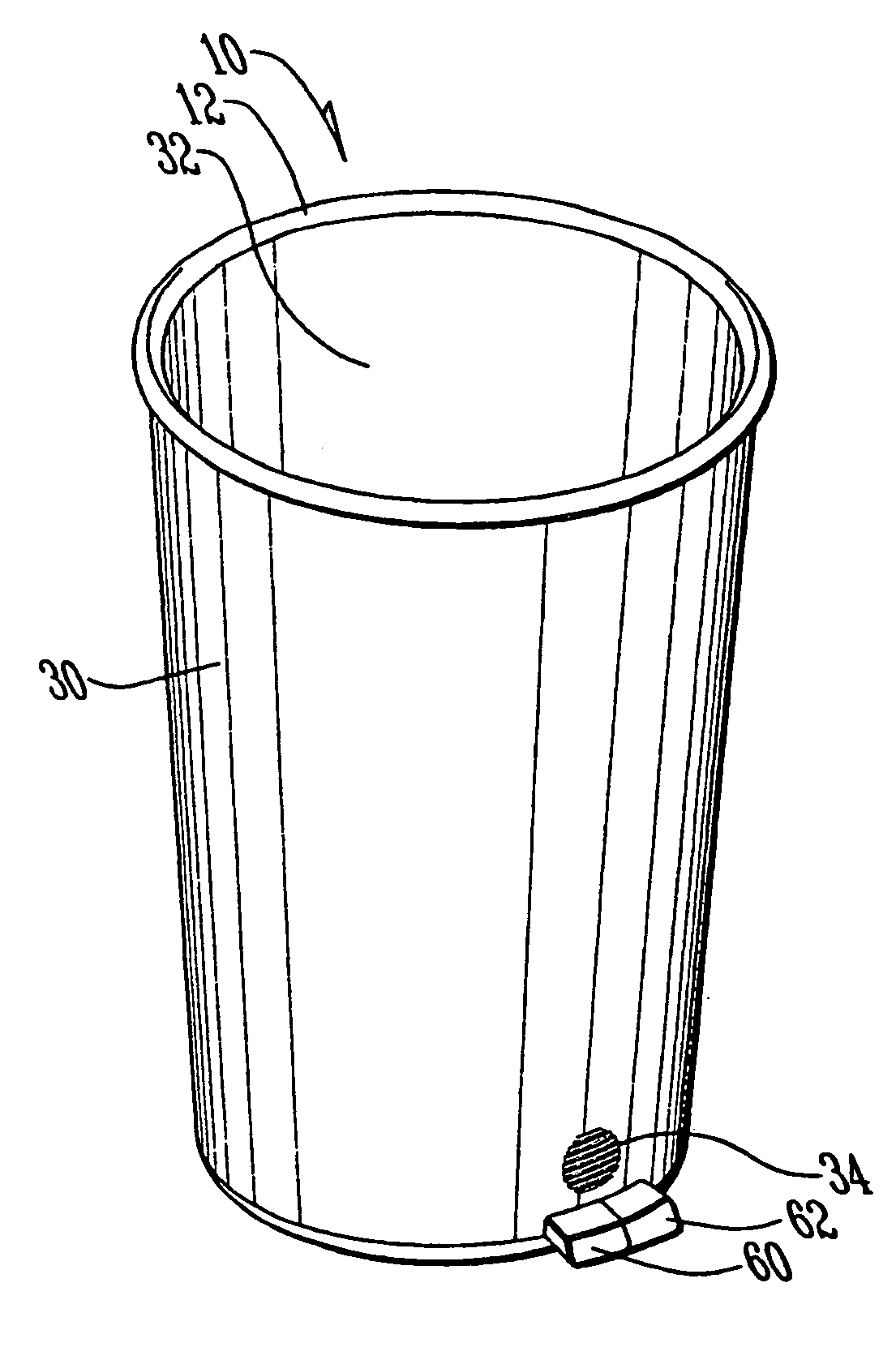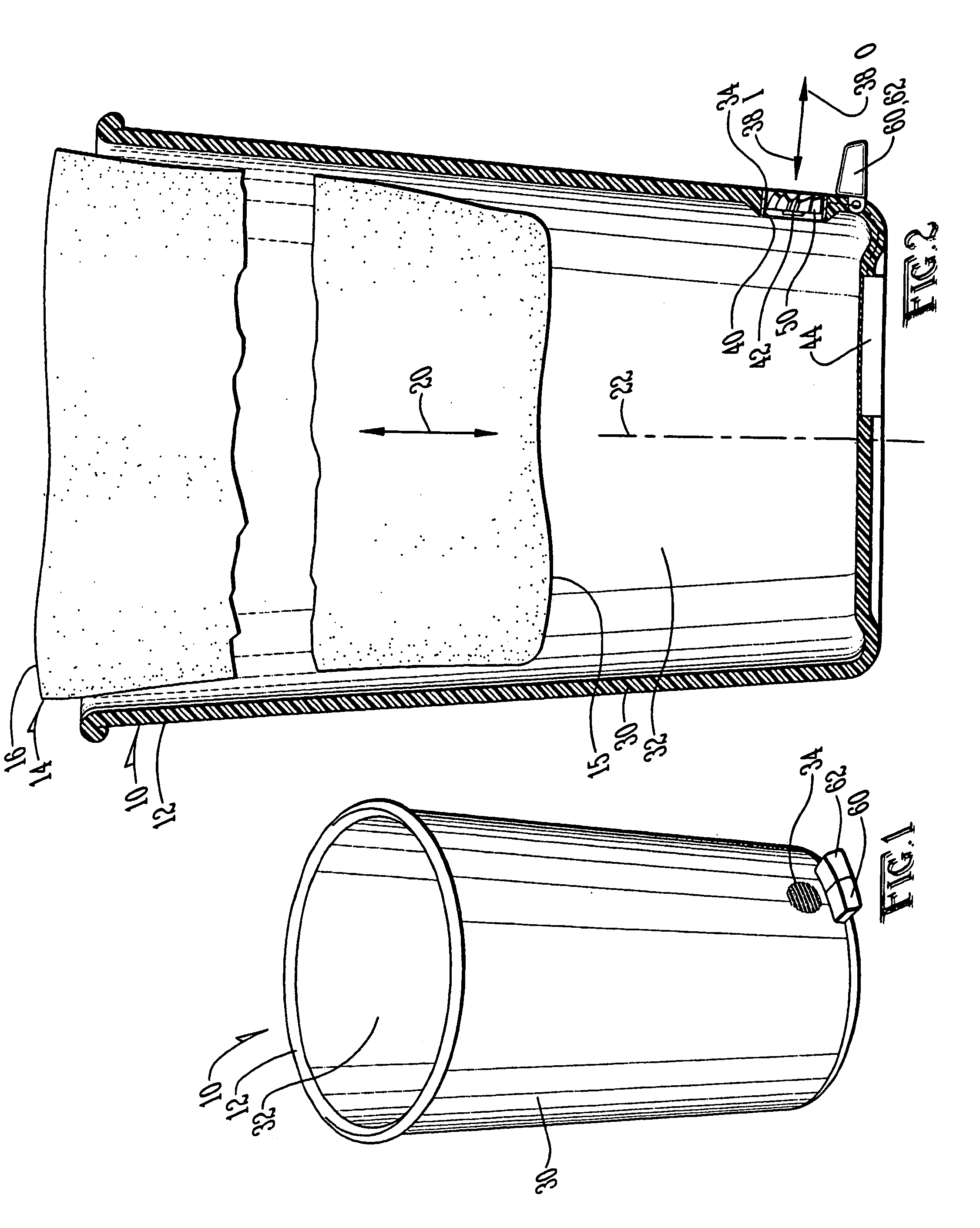Container for use with flexible bags
- Summary
- Abstract
- Description
- Claims
- Application Information
AI Technical Summary
Benefits of technology
Problems solved by technology
Method used
Image
Examples
Embodiment Construction
[0013]FIG. 1 shows a container 10 including a shell 12 which is adapted to accommodate a flexible bag, such as a flexible trash bag 14, or the like. Shell 12 includes a first end 14 which is a bottom end when shell 12 is in use. As can be understood from FIG. 2, first end 14 is closed. A second end 16 is a top end when shell 12 is in use and is open so the bag can be placed into the container and removed as indicated by double-headed arrow 20. A longitudinal axis 22 extends between first end 14 and second end 16 and the bag moves in the direction of the longitudinal axis when being placed into the container and being removed from the container.
[0014]A wall 30 connects first end 14 to second end 16 and is preferably cylindrical, but could be other shapes as well without departing from the scope of this disclosure. Wall 30 and first end 14 define an interior volume 32 of shell 12. As can be understood from FIG. 2, the flexible bag is accommodated in interior volume 32. A vent port 34 ...
PUM
 Login to View More
Login to View More Abstract
Description
Claims
Application Information
 Login to View More
Login to View More - R&D
- Intellectual Property
- Life Sciences
- Materials
- Tech Scout
- Unparalleled Data Quality
- Higher Quality Content
- 60% Fewer Hallucinations
Browse by: Latest US Patents, China's latest patents, Technical Efficacy Thesaurus, Application Domain, Technology Topic, Popular Technical Reports.
© 2025 PatSnap. All rights reserved.Legal|Privacy policy|Modern Slavery Act Transparency Statement|Sitemap|About US| Contact US: help@patsnap.com


